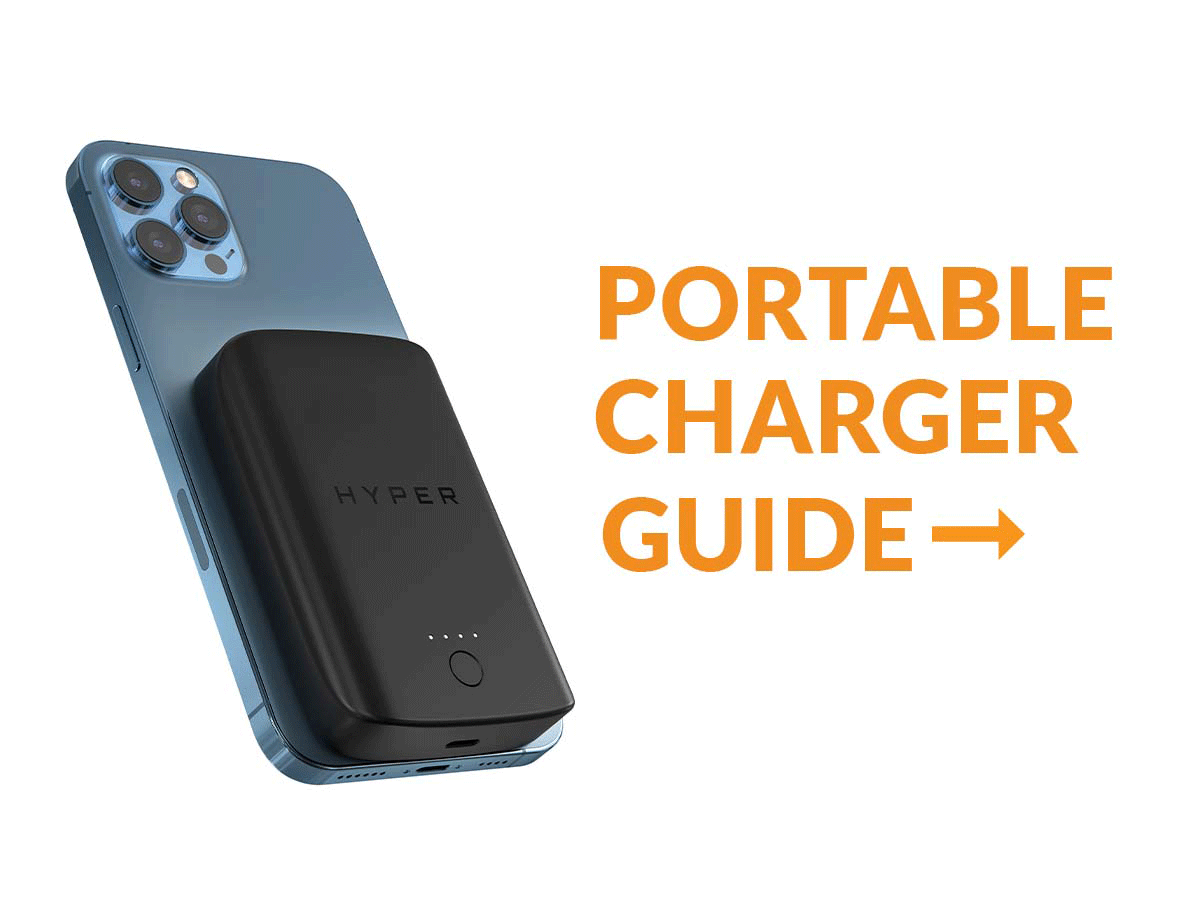The Ultimate Guide To Portable Chargers

We’ve all experienced it. You’re out and about, enjoying your life, and then it hits. That creeping feeling we’ve all come to know and hate: battery anxiety.
There’s no question, our mobile devices have made our lives so much easier. That is, until there’s nowhere to plug in and power up. But, don’t fret, ‘cause that’s where portable chargers come into the mix. They’re powerful, great for on-the-go, and if there’s one thing that’s certain, they’ll put an end to any battery anxiety in your life.
What are the advantages of a portable charger?
There are countless advantages to using a portable charger to power up your devices whether you’re using them for work or for play.
- Portability: Most portable chargers easily fit in your hand, making them perfect to take anywhere. They’ll never take up too much space in your backpack, purse or pocket.
- Rechargeable: Every time you need to charge your electronic devices, just charge your portable charger. You can recharge and reuse it over and over.
- Fast-Charging: Time is money, and that’s why so many portable chargers offer fast charging speeds so you don’t have to wait hours for your phone to charge.
- No Battery Anxiety: Whether you’re traveling for work or vacation, you won’t have to worry about your phone running out of battery.
What’s the difference between a portable charger and a power bank?
There is no difference between a power bank and a portable charger other than the obvious name difference. Tomato, tomato. Both names can be used to refer to the exact same device you use to charge your laptop, phone, tablet, headphones or any other tech products.
A portable charger has several different names including:
- Battery pack
- Charging station
- Power bank
- Wireless charger
- Back-up charging device
How long can you use a portable charger?
Similar to a laptop or smartphone battery, portable chargers also have a certain number of charge-discharge cycles before the device starts to lose its power capacity.
- Normally, lithium-ion portable chargers will fall to 80% capacity after around 500 cycles
On average, portable chargers last around 4 to 5 years and can hold a charge for 4-6 months without losing much power.
For example, a 5000mAh portable charger that is charged once every two days may need 1,000 days to reach the 500 charge-discharge cycles and drop to 80% battery capacity.
Do portable chargers hurt a phone’s battery life?
Almost 100% of the time, no, a portable charger that meets or exceeds quality standards will not hurt your phone, tablet or laptops’ battery life. As long as the voltage output of the portable charger matches your device’s intended voltage output, you should see no issues whatsoever.
However, if you’ve purchased a portable charger and it’s delivering a voltage that’s higher or lower than what your device requires, this can cause damage to battery life or charging capacity.
Here are a few other things to consider before considering a portable charger:
- Make sure the portable charger has over-current protection
- Make sure the portable charger has over-voltage protection
- Make sure you have a quality cable or cord to match your portable charger
Are portable chargers airline safe?
According to TSA guidelines, portable chargers containing a lithium-ion battery must be packed in your carry-on luggage.
Portable chargers are not allowed in checked bags because the battery contains potentially hazardous materials.
- The FAA doesn’t allow any type of battery exceeding 27000mAh
Keep these guidelines in mind before flying so you don’t have to answer to the TSA.
What does mAh stand for?
mAh is a unit of measurement used for electric power, specifically for batteries and chargers. It stands for milliamp hour.
- The higher the mAh in the charger, the more power and battery life it’ll have
For rechargeable batteries found in portable chargers, the mAh shows how much charge the battery can hold, and how long it can power another device before you’ll need to charge it.
How fast can a portable charger power up devices?
So, your portable charger’s speed is really dependent on its mAh limits. As we stated earlier, every portable charger features a number that tells you the mAh or milliamp hours.
- Common sizes range from 2000mAh to 15000mAh to even 27000mAh
- A 5000mAh portable charger charges an iPhone 13 up to 1.5X on a single charge
- A 10000mAh portable charger charges an iPhone 13 up to 5X on a single charge
- A 27000mAh portable charger charges an iPhone 13 up to 9X on a single charge
The bigger the number, the more power and the faster your devices will recharge.
Put an end to battery anxiety with our best-selling portable chargers!
- HyperJuice Magnetic Wireless Battery Pack
- HyperJuice 18W 10000mAh Battery Pack
- HyperJuice 18W 15000mAh Battery Pack
- Pearl Mini Battery Pack 1600mAh
- Pearl Battery Pack 3000mAh

